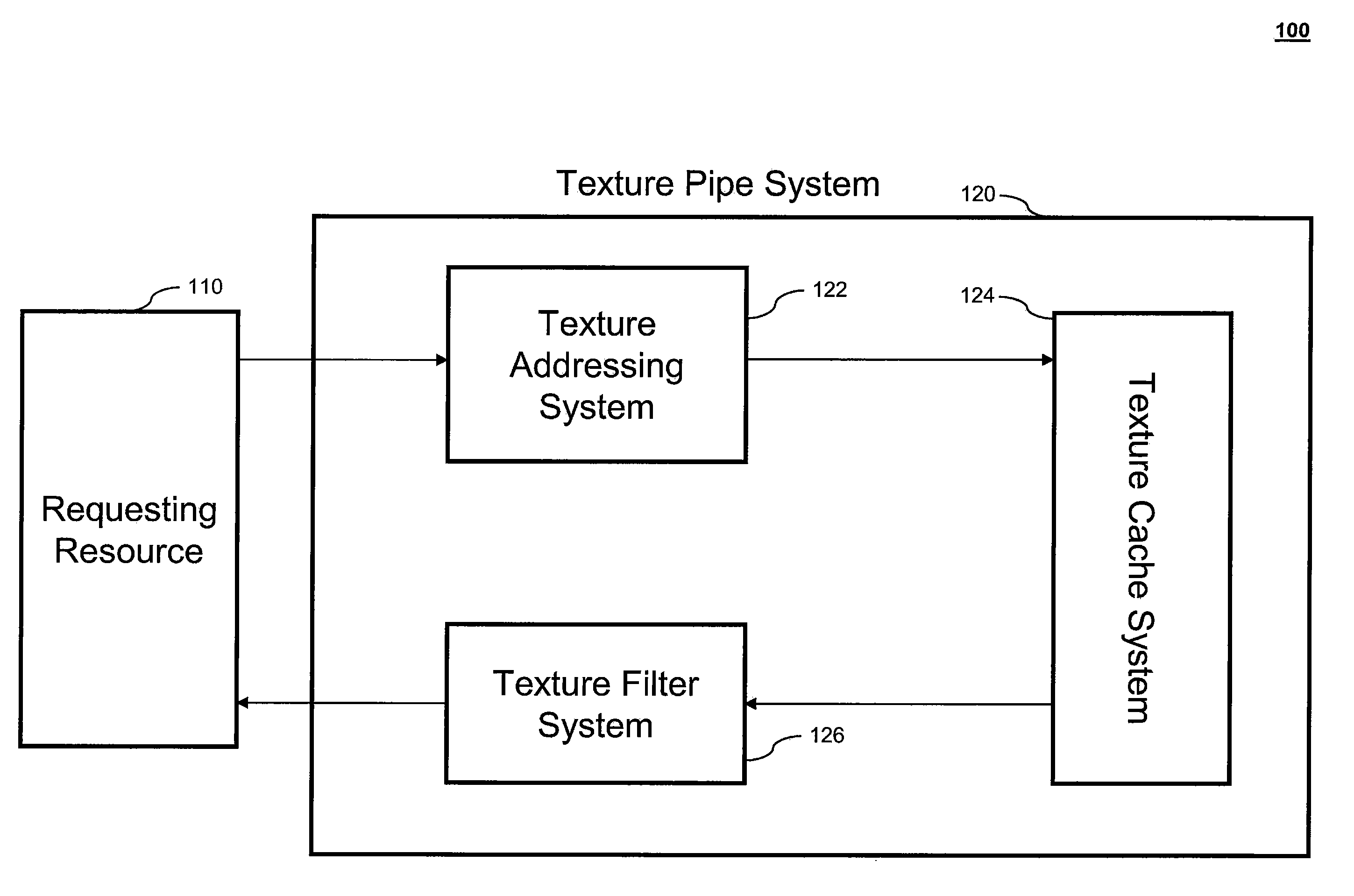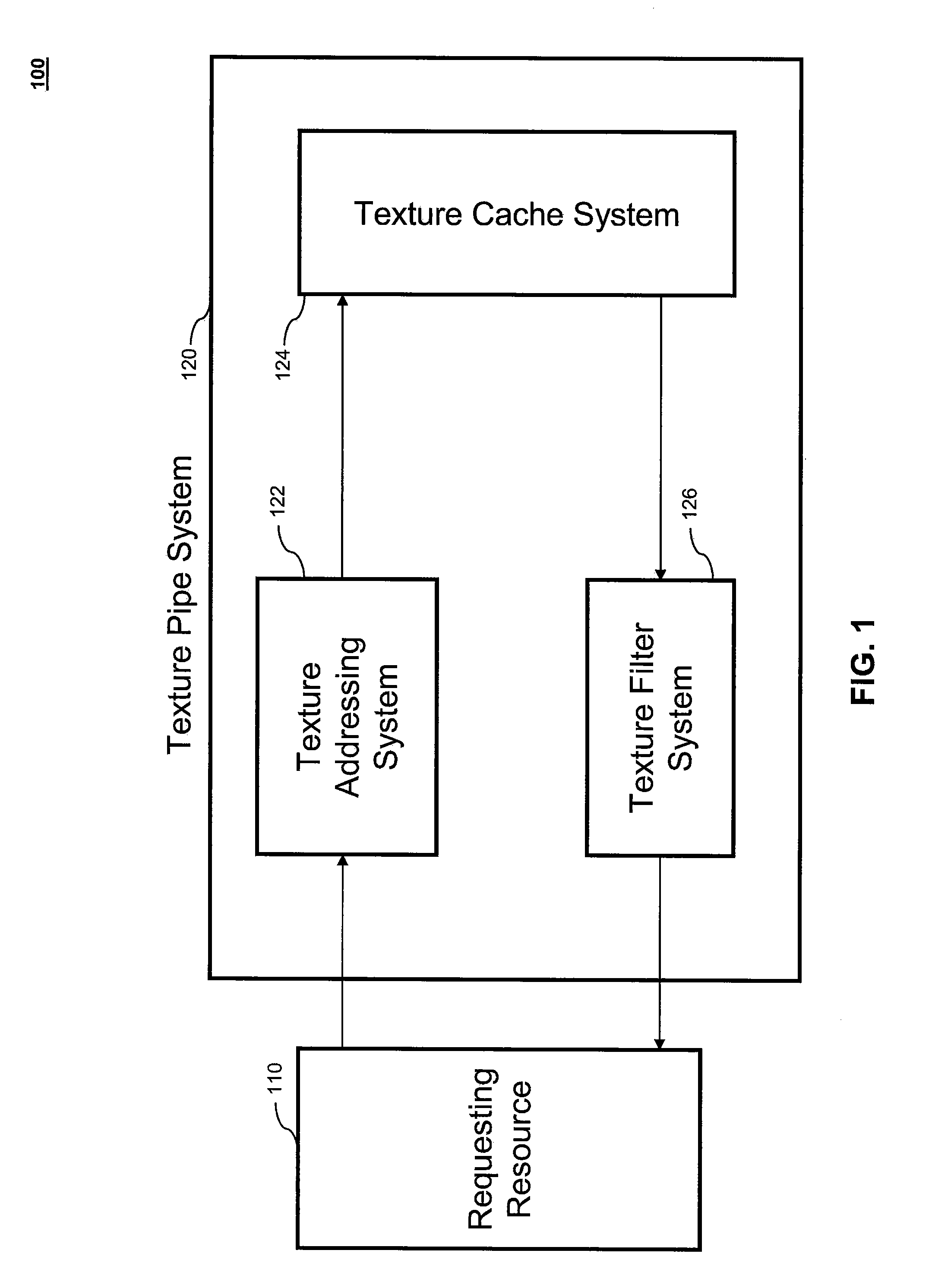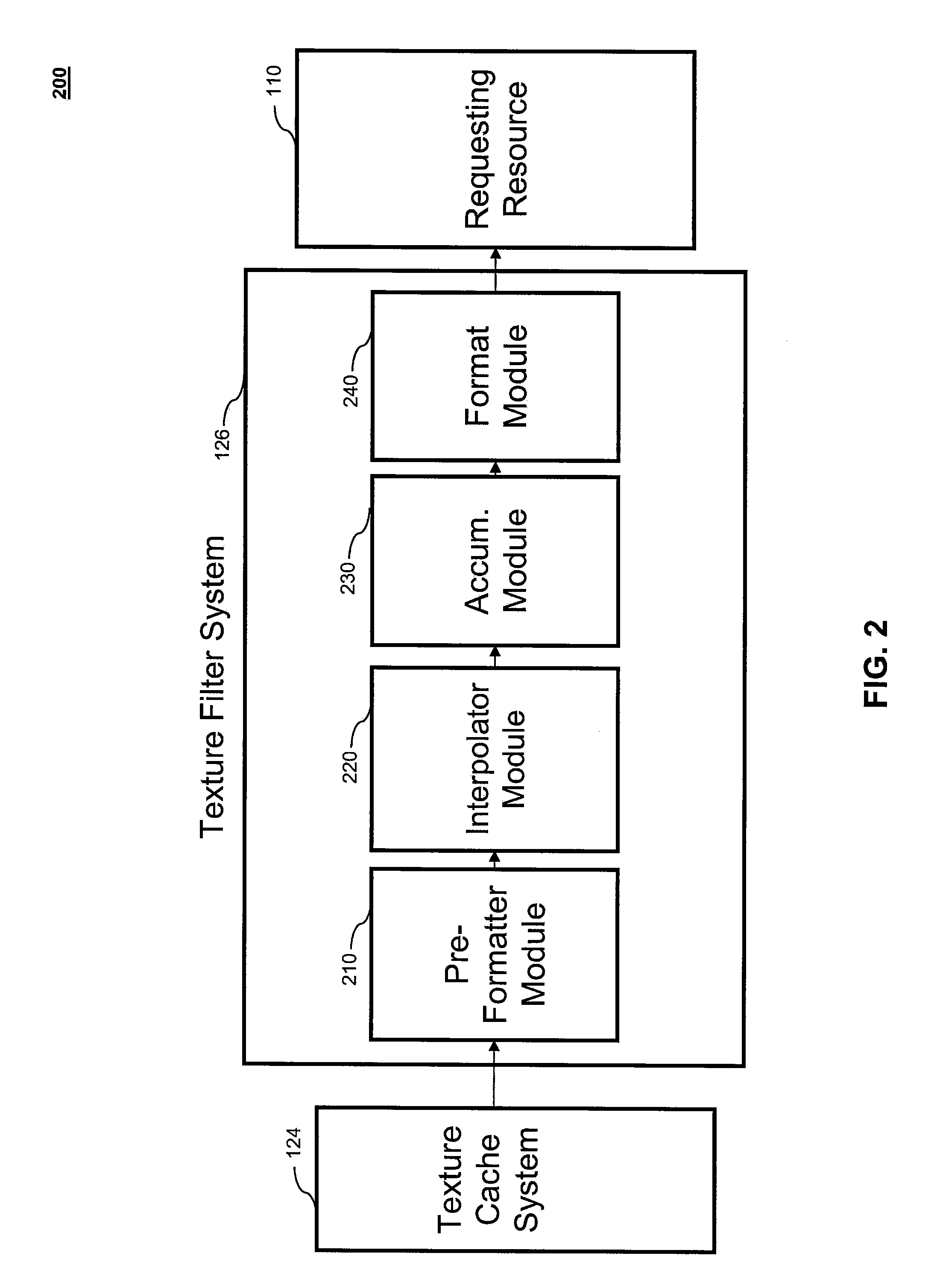Floating Point Texture Filtering Using Unsigned Linear Interpolators and Block Normalizations
a floating point texture and interpolator technology, applied in the field of graphics processing tasks, can solve the problems of large amount of “blockiness”, high degree of computational complexity, and inability to solve blockiness
- Summary
- Abstract
- Description
- Claims
- Application Information
AI Technical Summary
Benefits of technology
Problems solved by technology
Method used
Image
Examples
Embodiment Construction
[0025]The present invention relates to a texture filter with the ability to receive texel data in multiple formats, including floating point and fixed point, in a signed or unsigned format. In embodiments of this invention, floating point texel data is converted and normalized into a fixed point format. Once the texel data is in a fixed point format then the interpolations can be preformed using fixed point data calculations. In this manner the implementation of the functionality within the interpolator module does not necessitate the use of floating point arithmetic logic. After the interpolations are accumulated in the accumulator module the format module converts the texel data into a standard floating point representation.
[0026]While specific configurations, arrangements, and steps are discussed, it should be understood that this is done for illustrative purposes only. A person skilled in the pertinent art(s) will recognize that other configurations, arrangements, and steps may ...
PUM
 Login to View More
Login to View More Abstract
Description
Claims
Application Information
 Login to View More
Login to View More - R&D
- Intellectual Property
- Life Sciences
- Materials
- Tech Scout
- Unparalleled Data Quality
- Higher Quality Content
- 60% Fewer Hallucinations
Browse by: Latest US Patents, China's latest patents, Technical Efficacy Thesaurus, Application Domain, Technology Topic, Popular Technical Reports.
© 2025 PatSnap. All rights reserved.Legal|Privacy policy|Modern Slavery Act Transparency Statement|Sitemap|About US| Contact US: help@patsnap.com



